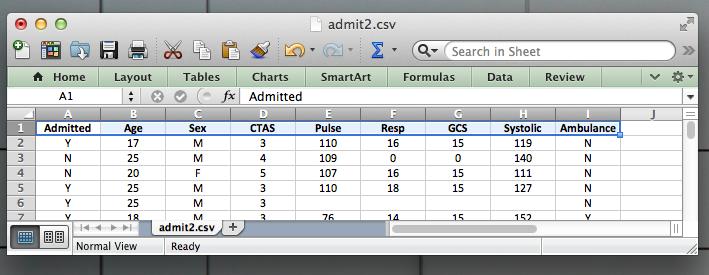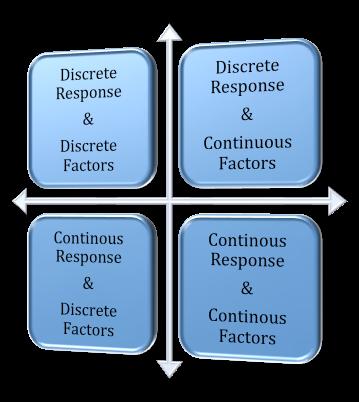Response, Factor, and Level - Three Experimental Definitions You Might be Getting Wrong
June 24, 2020, 11:59 p.m.

When talking about experimental designs do you ever get bewildered by the terms response, factor, and level? If so you are not alone. However, getting the definition of these terms is absolutely critical to ensure that the experimental design is not ruined in the initial planning and execution phases.
In this article, I will present definitions for these terms, synonyms, and point out ways to avoid getting it wrong. Along the way we will also define discrete, continuous, categorical, binary, and ordinal - some other commonly misused terms.
Response
Often the response is easily identified. It is often recognized as the outcome of the study. If your experimental hypothesis is properly described, the response is usually the variable you are concerned about. This can also be called the dependent variable, the outcome variable, or the experimental variable.Examples of response variables could be the number of scoops of ice cream sold, the height of a corn plant, the patient's pain score after surgery, or the score on a standardized knowledge test.
Responses can be either continuous or discrete.
Discrete
Discrete responses have only a range of possible values. This can include:- Binary: The response is one of only two possible values. This might be for example, getting a disease or not getting it.
- Ordinal: The response is on an ordered scale. This might be for example score on a 1 to 5 triage scale.
- Categorical: The response is one of several categories such as eye color, type of pet, or type of antiobiotic given.
Continuous
Continuous responses are somewhat easier to conceptualize. Continous responses take a value that theoretically could take on any possible value in a range of portion of the number line. An example would be height, blood pressure, temperature.
Factor
Factors are the variables in the study that we believe will influence the results.
Factors can also be called independent variables, explanatory variables, manipulator variables, or risk factors.
Examples of factors may be an antibiotic given to a patient, a teaching session given to a student, the type of triage system being used, or the age of a person taking a driving test.
Factors too can be either continuous or discrete.
An example of a continuous factor might be
When factors are discrete, again either binomial, ordinal, or categorical, the values that they can take are called levels.
Levels
Example of levels of a factor may be such things as the type of antibiotic given, triage system used, or the presence or absence of a training session.
Why all the Fuss?
Why is it so important to know all these tedious definitions? Choosing the right statistical test to analyze your data depends directly on knowing the response, factors, and levels for the experimental data. Choosing this statistical test correctly means sailing through the power calculation, study design, data collection, and analysis. Getting it wrong can mean hours and hours of needless work and - in the worst case - an experiment that is unsalvageable.

Are You Ready to Increase Your Research Quality and Impact Factor?
Sign up for our mailing list and you will get monthly email updates and special offers.
